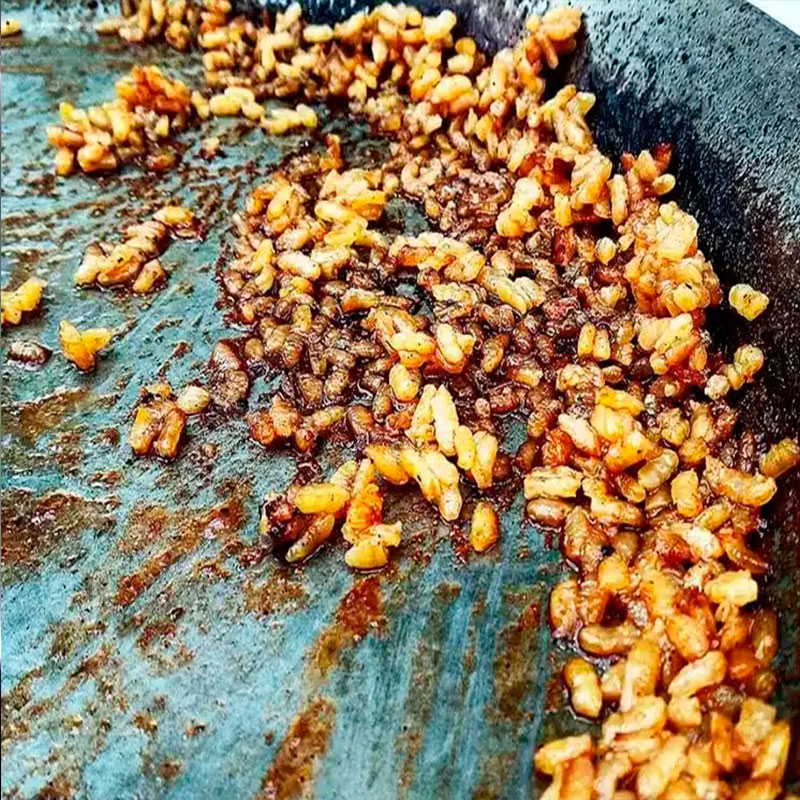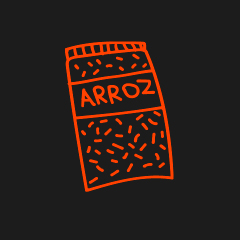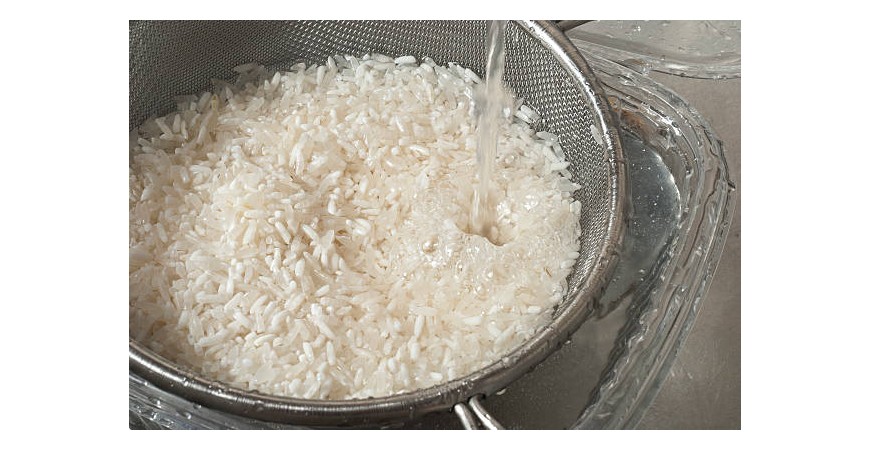Is it good to wash rice before cooking it?
Is it good to wash rice before cooking? Myths and truths
Preparation is essential when making a paella if we want it to turn out as good as possible: we need the best tomatoes for the sofrito, to have correctly calculated the amount of rice and water, to cut the pieces of meat or fish... And washing the rice?
This last question is one that we have noticed some people are asking lately on social media. In this blog post, we will answer this question so there will be no doubts about whether to wash the rice for paella.
Why wash rice in some recipes?
Some cultures and culinary traditions recommend washing rice before cooking it for various reasons such as hygiene, desired texture, and removal of excess starch or impurities.
The role of starch in rice texture
Starch is a key component in rice texture. Depending on the type of rice and the recipe, the amount of surface starch can influence the creaminess or separation of the grains. In dishes like risotto, it's important to keep the starch to get a creamy texture, while in other preparations like fried rice, it's preferable to remove it to avoid clumping.
When is it recommended to wash rice and when is it not?
Washing rice may be recommended in recipes where you want looser rice, like white rice, sushi, or salads. Also, in some countries, washing rice is a common practice to remove pesticide residues or dust accumulated during storage. However, in other preparations like paella or risotto, it is recommended not to wash it to preserve its starch content, which helps with proper broth absorption and improves the final texture of the dish.
Do you need to wash rice before making paella?
The Valencian tradition says not to wash the rice, to be more precise, it should not be washed for cooking paellas or risottos.
This doesn't mean it can't be washed, although it is not recommended nor is it what is traditionally done, since it is usually not washed in Valencian rice.
Some chefs recommend doing so to remove possible impurities or excess starch. Still, this should be considered more of an exception than the rule, as most chefs prefer not to wash the rice for making paella.
.jpg)
Properties of rice for paella and its behavior during cooking
Paella rice is short or medium-grain and has a high liquid absorption capacity. Washing it could cause it to lose part of its structure, affecting its behavior during cooking and potentially making it harder to form the socarrat.
Experts' opinions: chefs and Valencian tradition
Some chefs recommend washing the rice to remove possible impurities or excess starch. However, most paella experts prefer not to do so, as it is not the traditional practice and could alter the desired texture of the rice. According to renowned Valencian chefs, medium or short-grain rice, which is most commonly used in paella, is designed to absorb the flavors of the broth without falling apart, and washing it can affect this ability.
What happens if you wash rice before cooking it?
Advantages and disadvantages of washing rice
Washing rice has benefits such as removing impurities and reducing starch, which allows for looser grains in certain preparations. However, it also has disadvantages, especially in recipes like paella, where it is necessary to keep the starch to achieve the proper texture and correct absorption of flavors.
If the rice is washed, it may become drier and looser but less hydrated, meaning it loses some of its characteristic stickiness. Additionally, washing rice can remove some of the nutrients in the grain. In some cases, like with brown rice, washing may be unnecessary as its outer shell protects the internal nutrients and it has less surface starch.
Why shouldn't you wash rice for paella?
The reason you should not wash rice for making paella is based on two main factors: the first is that you remove the surface starch, which helps create the prized socarrat.

The second reason is that, to clean it, rice is often soaked, which means we are already hydrating the rice. Because of this, we would need to adjust the water ratio for the paella, or we risk overcooking the grains.
Another reason could be the type of grain, the preferred rice for paella is round-grain rice, which has a high starch content that is responsible for the sticky texture of the grain. When washed, this grain can become drier and looser but less hydrated, meaning it loses its characteristic stickiness.
Frequently asked questions about washing rice
Does the type of rice influence whether it should be washed or not?
Yes, the type of rice influences this. Long-grain rices typically benefit from washing to prevent them from being sticky, while short or medium-grain rices, like those used in paella, do not need washing because they have a higher starch content. Also, some commercially processed rices are already pre-washed, making it unnecessary to wash them at home. But this doesn't always apply, especially for paella.
What do experts say about washing rice for paella?
Our answer to this question would be that it is not necessary to wash the rice you are going to use for making paella, although you can wash it for other recipes. It is recommended to wash rice for making sushi, fried rice, white rice, or salads.
If washing the rice, it is better not to soak it, preferably wash it with cold tap water and a strainer.
We should also keep in mind that the most common reason for washing rice is due to potential contamination by pesticides or to remove arsenic. Spanish rice is grown in exclusive and natural fields, so its arsenic level is minimal and typically free of impurities and contamination. Likewise, it should be noted that cleaning rice, although it can remove arsenic, also removes some of the nutrients from the rice grain.
Therefore, when it comes to washing rice, the decision is more a matter of personal preference.
If you'd like to see more content from our blog, follow this link.




